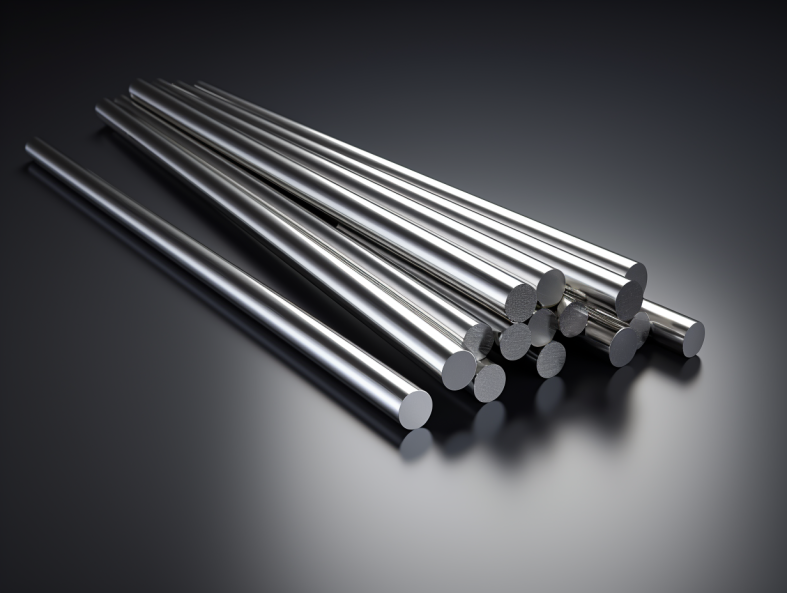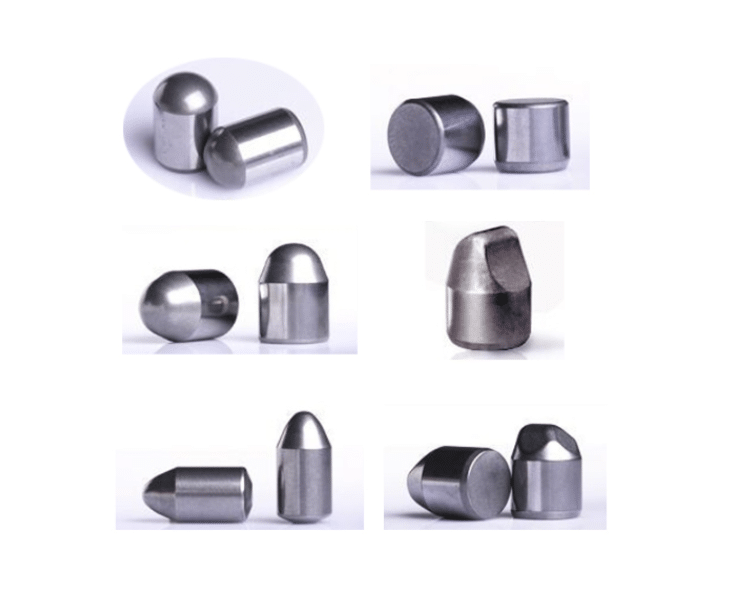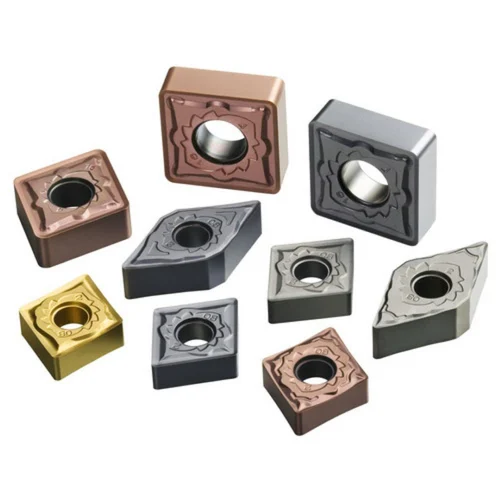Introduction
Definition of Carbide Rod
A carbide rod is a type of cutting tool used in various industries, including manufacturing and construction. It is made from a combination of tungsten carbide and cobalt, which gives it exceptional hardness and durability. Carbide rods are commonly used for drilling, milling, and turning applications, as they can withstand high temperatures and maintain their sharpness for extended periods. These rods are designed to provide superior performance and precision, making them essential tools for professionals in the metalworking and machining fields.
Uses of Carbide Rod
Carbide rods are widely used in various industries due to their exceptional hardness and durability. These rods are commonly used in the manufacturing of cutting tools, such as drills, milling cutters, and end mills. The hardness of carbide rods allows them to withstand high temperatures and maintain their cutting edge for extended periods. Additionally, carbide rods are utilized in the construction industry for drilling and cutting through tough materials like concrete and metal. Their superior strength and resistance to wear make them an ideal choice for these applications. Moreover, carbide rods are also employed in the production of wear-resistant parts, such as bearings and dies, where their hardness and toughness are crucial. Overall, the uses of carbide rods are diverse and essential in various sectors, contributing to improved efficiency and productivity.
Importance of Carbide Rod in Various Industries
Carbide rods play a crucial role in various industries due to their exceptional properties and durability. These rods are widely used in manufacturing processes such as metal cutting, woodworking, and mining. The importance of carbide rods lies in their ability to withstand high temperatures, resist wear and corrosion, and maintain their sharpness for extended periods. Moreover, carbide rods provide excellent precision and accuracy, making them indispensable in the production of precision tools and components. With their exceptional strength and reliability, carbide rods have become a staple in industries that require robust and efficient cutting and shaping processes.
Composition of Carbide Rod
Materials Used in Carbide Rod
Carbide rods are made using a variety of materials that contribute to their durability and performance. One of the main materials used in the production of carbide rods is tungsten carbide, a compound known for its exceptional hardness and resistance to wear and corrosion. Other materials commonly used include cobalt, which acts as a binder to hold the tungsten carbide particles together, and various additives that enhance the strength and toughness of the rod. These materials are carefully selected and combined to create carbide rods that can withstand high temperatures, heavy loads, and intense cutting forces, making them ideal for applications in industries such as metalworking, woodworking, and mining.
Manufacturing Process of Carbide Rod
Carbide rods are manufactured using a precise and intricate process. The manufacturing process of carbide rods begins with the selection of high-quality raw materials, such as tungsten carbide powder and cobalt powder. These materials are carefully measured and mixed in specific proportions to form a homogeneous mixture. The mixture is then compacted under high pressure to create a solid preform, which is the initial shape of the carbide rod. Next, the preform undergoes a sintering process, where it is heated to a high temperature in a controlled atmosphere. This allows the individual particles to bond together, resulting in a dense and durable carbide rod. After sintering, the rod is carefully machined and ground to achieve the desired dimensions and surface finish. Finally, the carbide rod undergoes quality control checks to ensure that it meets the required specifications. The manufacturing process of carbide rods requires a combination of precise measurements, advanced machinery, and skilled craftsmanship to produce high-quality rods that are widely used in various industries.
Properties of Carbide Rod
Carbide rod is a versatile and durable material that is widely used in various industries. It possesses several properties that make it highly desirable for many applications. Firstly, carbide rod has excellent hardness, making it resistant to wear and abrasion. This property ensures that the rod can withstand heavy loads and prolonged use without losing its shape or effectiveness. Additionally, carbide rod has exceptional heat resistance, allowing it to maintain its structural integrity even at high temperatures. This makes it suitable for use in environments with extreme heat or thermal stress. Furthermore, carbide rod exhibits excellent corrosion resistance, making it ideal for applications in corrosive environments. Its resistance to chemical reactions ensures that the rod remains unaffected by exposure to various chemicals and substances. Lastly, carbide rod has high strength and toughness, enabling it to withstand heavy impacts and shocks without breaking or deforming. Overall, the properties of carbide rod make it a reliable and versatile material for a wide range of industrial applications.

Applications of Carbide Rod
Cutting Tools
Carbide rods are an essential component in the manufacturing industry, particularly in the field of cutting tools. These rods are made from a combination of tungsten carbide and cobalt, which gives them exceptional hardness and durability. Due to their high strength and resistance to wear, carbide rods are widely used in the production of drills, end mills, reamers, and other cutting tools. The superior performance of carbide rods allows for faster cutting speeds, improved precision, and extended tool life. As a result, they are highly sought after by professionals in various industries, including automotive, aerospace, and machining.
Milling and Drilling
Milling and drilling are two essential processes in machining operations. Both techniques involve the removal of material from a workpiece to create a desired shape or hole. Carbide rods play a crucial role in these processes due to their exceptional hardness and heat resistance. When used in milling, carbide rods ensure precise and efficient cutting, resulting in smooth surfaces and accurate dimensions. In drilling applications, carbide rods provide excellent stability and durability, allowing for the creation of deep and precise holes. With their superior performance, carbide rods have become a popular choice among manufacturers and machinists for milling and drilling operations.
Wear Parts
Carbide rods are widely used as wear parts in various industries. They are known for their exceptional hardness and resistance to wear, making them ideal for applications that involve high levels of friction and abrasion. These rods are commonly used in manufacturing processes such as metal cutting, drilling, and milling, where they provide long-lasting performance and precision. Additionally, carbide rods are also used in the production of cutting tools, dies, and molds, where their high strength and durability ensure reliable and efficient operation. Overall, carbide rods play a crucial role in enhancing the performance and longevity of wear parts in numerous industrial applications.
Advantages of Carbide Rod
High Hardness and Wear Resistance
Carbide rods are renowned for their exceptional high hardness and wear resistance. These rods are made from a combination of tungsten carbide and cobalt, resulting in a material that can withstand extreme conditions and heavy usage. The high hardness of carbide rods allows them to resist wear and deformation, making them ideal for applications in industries such as metalworking, mining, and construction. Additionally, their outstanding wear resistance ensures a longer lifespan, reducing the need for frequent replacements. Whether it’s cutting, drilling, or machining, carbide rods provide superior performance and reliability, making them a popular choice among professionals in various fields.
Excellent Heat Resistance
Carbide rods are renowned for their excellent heat resistance. When subjected to high temperatures, these rods maintain their structural integrity, making them ideal for use in various industrial applications. The unique composition of carbide rods allows them to withstand extreme heat, ensuring long-lasting performance and reliability. With their exceptional heat resistance, carbide rods are the preferred choice for cutting, drilling, and milling operations that involve high-speed and high-temperature conditions. Whether used in the aerospace, automotive, or manufacturing industries, carbide rods consistently deliver exceptional heat resistance, making them an indispensable tool for professionals seeking durability and efficiency.
Long Tool Life
Carbide rods are known for their exceptional long tool life. They are made from a combination of tungsten carbide and cobalt, which results in a material that is extremely hard and wear-resistant. This hardness allows carbide rods to withstand high temperatures and maintain their cutting edge for a longer period of time compared to other tool materials. As a result, they are widely used in various industries, such as manufacturing, machining, and metalworking, where long tool life is crucial for productivity and cost-efficiency. With carbide rods, businesses can reduce tool replacement frequency, increase machining speeds, and achieve higher precision in their operations.
Disadvantages of Carbide Rod
Brittleness
Carbide rods are known for their exceptional hardness and durability. However, one of their major drawbacks is their brittleness. Due to their high carbon content, carbide rods tend to be more prone to cracking and breaking under stress. This brittleness can be a limiting factor in their applications, especially in situations where impact resistance is crucial. Manufacturers and users of carbide rods need to take extra precautions to prevent damage and ensure the longevity of these valuable tools.
High Cost
The high cost of carbide rods is a significant factor to consider when purchasing this material. Carbide rods are made from a combination of tungsten and carbon, which are both expensive materials. Additionally, the manufacturing process for carbide rods involves precise machining and heat treatment, further adding to the cost. However, despite the high cost, carbide rods offer exceptional durability and performance, making them a worthwhile investment for industries that require high-quality cutting tools and wear-resistant components.
Limited Machinability
Carbide rods are widely used in various industries due to their exceptional hardness and durability. However, it is important to note that carbide rods have limited machinability. This means that they can be difficult to shape or modify using traditional machining techniques. The high hardness of carbide rods requires specialized tools and techniques to effectively machine them. It is crucial for manufacturers and engineers to be aware of the limitations of carbide rods when designing and manufacturing components. Despite their limited machinability, carbide rods remain a popular choice for applications that require high strength and wear resistance.
Conclusion
Summary of Carbide Rod
Carbide rod is a type of tooling material that is widely used in various industries. It is known for its exceptional hardness and durability, making it ideal for applications that require high precision and strength. The rod is made from a combination of tungsten carbide and cobalt, which gives it its unique properties. Carbide rods are commonly used in the manufacturing of cutting tools, such as drills and end mills, as well as in the production of wear-resistant parts. In summary, carbide rod is a crucial component in many industrial processes, providing the necessary strength and reliability for demanding applications.
Future Developments
Future developments in the field of carbide rods are expected to focus on enhancing their durability and performance. Researchers are exploring various techniques to improve the composition and structure of carbide rods to make them more resistant to wear and corrosion. Additionally, efforts are being made to develop new manufacturing processes that can produce carbide rods with even higher precision and consistency. These advancements are aimed at meeting the growing demand for carbide rods in industries such as automotive, aerospace, and machining. With ongoing research and innovation, it is anticipated that carbide rods will continue to play a crucial role in cutting-edge technologies and contribute to the advancement of various industries in the future.
Final Thoughts
In conclusion, carbide rods are an essential tool in various industries. Their high durability and strength make them ideal for cutting, drilling, and shaping hard materials. Whether used in manufacturing, construction, or woodworking, carbide rods provide precision and efficiency. Additionally, their resistance to heat and wear ensures a longer lifespan, reducing the need for frequent replacements. Overall, carbide rods are a valuable asset that enhances productivity and quality in countless applications.




